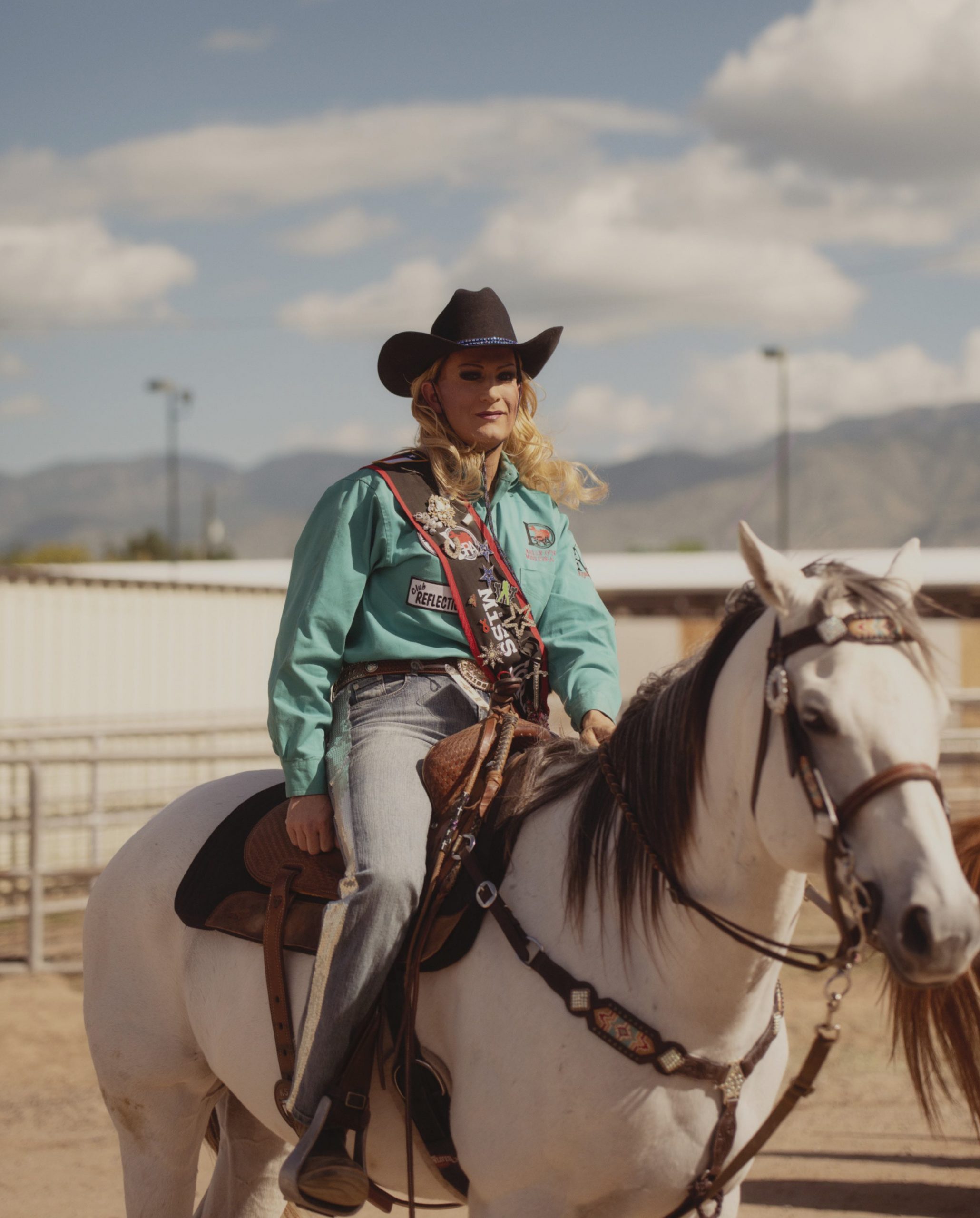An electric portrait of America’s gay rodeo scene
- Text by HUCK HQ
- Photography by Luke Gilford

Photographer Luke Gilford was always captivated by the spectacle of rodeo. Growing up in Colorado, the son of a member of the Professional Rodeo Cowboys Association, it was the simultaneous displays of power and vulnerability that he found most enchanting; the obvious risk of danger, offset by displays of beauty and grace.
But, given its status as an all-American institution, it was a space dominated by conservatism – and, as a result, homophobia. “When you’re queer, and especially when you’re queer in an environment that is so hostile to any form of difference, it effects every ounce of your being,” he says. “It is about survival more than identity.”
It wasn’t until years later that Gilford began to see himself in the culture, when a chance meeting at a San Francisco pride event introduced him to the International Gay Rodeo Association (IGRA). Somewhat inevitably, Dolly Parton played a key role. “One of her songs was playing near a table and there were a few queer people with cowboy hats standing around smiling and greeting people,” he remembers. “I couldn’t believe my eyes.”
 By next weekend, Gilford was attending his first queer rodeo event in New Mexico. For him, it was a revelation: seeing members of LGBTQ community accepted in a historically unwelcoming space felt electric. So he kept coming back, and began taking his camera, sensing an opportunity to connect with people, to document them, and to share stories.
By next weekend, Gilford was attending his first queer rodeo event in New Mexico. For him, it was a revelation: seeing members of LGBTQ community accepted in a historically unwelcoming space felt electric. So he kept coming back, and began taking his camera, sensing an opportunity to connect with people, to document them, and to share stories.
Today, that all comes together in the form of National Anthem, a visual celebration of America’s gay rodeo subculture. Shot on medium-format film, Gilford’s images depict a warm and inclusive world: one that serves as a direct rebuke to hatred and division. “Liberal versus conservative, urban versus rural, ‘coastal elite’ versus ‘middle America.’”

 The project itself began in 2016, when Donald Trump was entering the White House. Four years later, the divisions that he inflamed remain as clear as ever, although Gilford is hopeful that Americans can work to dismantle what he refers to as its “tribal dichotomies” – something he believes the LGBTQ community have been able to do within this pocket of the rodeo scene.
The project itself began in 2016, when Donald Trump was entering the White House. Four years later, the divisions that he inflamed remain as clear as ever, although Gilford is hopeful that Americans can work to dismantle what he refers to as its “tribal dichotomies” – something he believes the LGBTQ community have been able to do within this pocket of the rodeo scene.
As for the IGRA themselves, they, like many others, face an uncertain future due to the impact of COVID-19. But Gilford hopes National Anthem will inspire people to pledge support (he himself is donating proceeds of the book and prints sold back to the IGRA), as well as take on their spirit of rebellion.
“To me, the queer rodeo brings back the promise to the notion of America – it is truly intersectional,” he says. “My hope is for viewers to feel inspired by this and to expand or disrupt these dichotomies in their own ways.”

 National Anthem is out now on Damiani.
National Anthem is out now on Damiani.
Enjoyed this article? Like Huck on Facebook or follow us on Twitter.
Latest on Huck

Tender, carefree portraits of young Ukrainians before the war
Diary of a Stolen Youth — On the day that a temporary ceasefire is announced, a new series from photographer Nastya Platinova looks back at Kyiv’s bubbling youth culture before Russia’s February 2022 full-scale invasion. It presents a visual window for young people into a possible future, as well as the past.
Written by: Hannah Bentley

Analogue Appreciation: 47SOUL
Dualism — In an ever more digital, online world, we ask our favourite artists about their most cherished pieces of physical culture. Today, it’s Palestinian shamstep pioneers 47SOUL.
Written by: 47SOUL

Meet the hair-raised radicals of Berlin’s noise punk scene
Powertool — In his new zine, George Nebieridze captures moments of loud rage and quiet intimacy of the German capital’s bands, while exploring the intersections between music, community and anti-establishment politics.
Written by: Miss Rosen

Amid tensions in Eastern Europe, young Latvians are reviving their country’s folk rhythms
Spaces Between the Beats — The Baltic nation’s ancient melodies have long been a symbol of resistance, but as Russia’s war with Ukraine rages on, new generations of singers and dancers are taking them to the mainstream.
Written by: Jack Styler

Uwade: “I was determined to transcend popular opinion”
What Made Me — In this series, we ask artists and rebels about the about the forces and experiences that shaped who they are. Today, it’s Nigerian-born, South Carolina-raised indie-soul singer Uwade.
Written by: Uwade

Inside the obscured, closeted habitats of Britain’s exotic pets
“I have a few animals...” — For his new series, photographer Jonty Clark went behind closed doors to meet rare animal owners, finding ethical grey areas and close bonds.
Written by: Hannah Bentley

